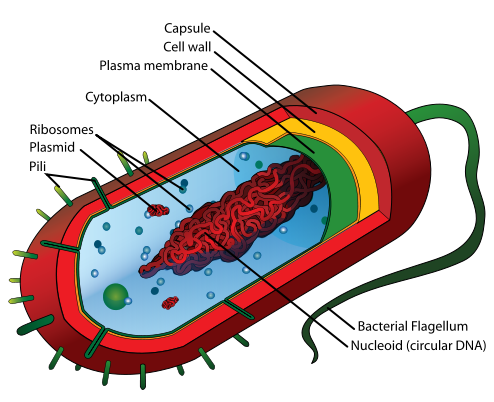For this unit, we will be dealing primarily with eukaryotic cells. However, it is important to know that there are two different types of cells: eukaryotic and prokaryotic.
Prokaryotes are found in the domains bacteria and archaea. The cells are less complex than eukaryotic cells, and they do not have a true nucleus. The genetic material is in the nucleiod region in their center. Pro means “before” and karyon means “nut” or “kernel”. This name refers to the fact that prokaryotes do not have a nucleus, as opposed to eukaryotes (“true kernel”) that do. Prokaryotic cells also do not contain membrane-bound organelles (organelles separated from the cytoplasm by a membrane).
Look at the diagrams below to get an idea of the difference between the two types of cells. Take note of the difference in complexity of the two.
Figure 1: Prokaryotic Cell

Figure 2: Eukaryotic Cell

Notice in particular the number of organelles in each cell, as well as differences in the location of genetic material. Remember: both plant AND animal cells are eukaryotic – prokaryotes are single-celled organisms (although not all single-celled organisms are prokaryotic – some are also eukaryotic).
Go to the site below for a short reading about the difference between the two types of cells. Remember that our focus for this unit is eukaryotic cells, so pay particular attention to their features.